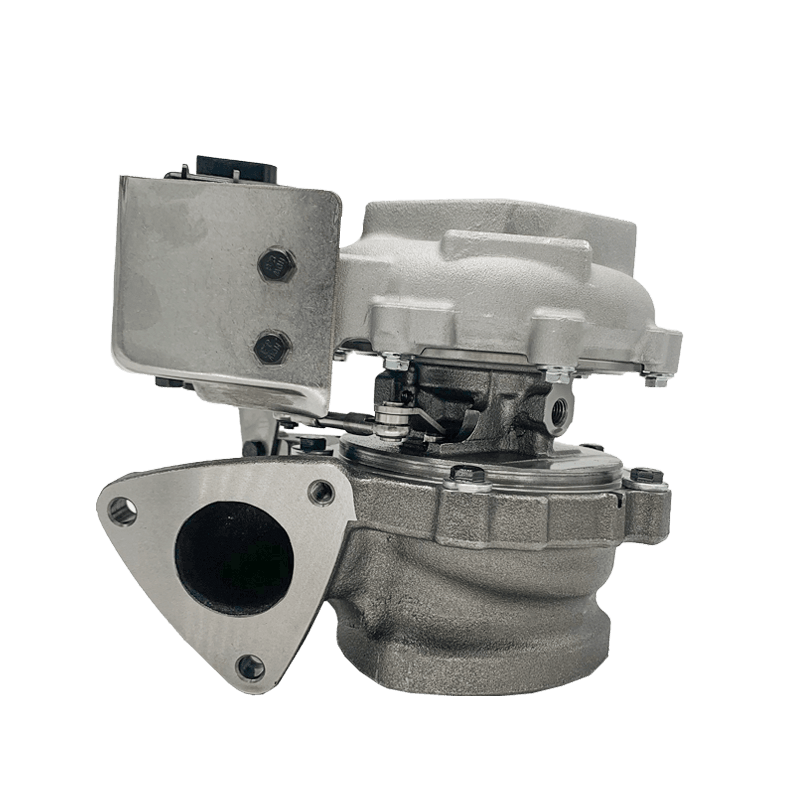Turbos and superchargers are part of both, and both are classified as superchargers. The function of the supercharger is to deliver boosted air to the engine and increase the output power of the engine. But different turbos and superchargers are similar. I will explain the difference between the two. The point is "how to turn the compressor" The supercharger has a component called the "compressor" that compresses the air. This compressor works by rotating. The compressor rotation mechanism of turbocharger and supercharger is different, and their advantages and disadvantages are different.

The turbocharger uses the flow rate of the gas (exhaust gas) discharged from the engine as energy. The exhaust gas is received by a pinwheel-shaped member called a turbine, and the rotational energy obtained by rotating the turbine is transferred to the compressor. It efficiently powers the engine as exhaust gases that are no longer needed are turned into energy. However, when the engine speed is low, the exhaust gas flow is insufficient, and the power of the turbocharger as a supercharger cannot play a great role.
As the number of revolutions and flow increases, the power is gradually exerted, but for the driver, even if he steps on the accelerator, there is no power at first, and the power only appears later, and it feels like there is a time difference. Yes. This is called "turbo lag". In recent cars, this turbo lag has been suppressed, and power is delivered with firmness even at low speeds. Older turbo cars often have this feeling of turbo lag, but many fans like to make it one of their "flavors". The supercharger utilizes the rotational force of the crankshaft inside the engine. The rotation of the crankshaft is transmitted to the compressor through a belt or the like.
Because the number of revolutions of the crankshaft is the number of revolutions of the engine, as long as the engine is running, the supercharger is constantly boosting. So power can be exerted even at low speeds, and because it is related to engine speed, there is no turbo lag like the turbocharger above. On the other hand, because it uses the rotational energy of the crankshaft, it is less efficient than a turbocharger that uses unwanted exhaust energy.In addition, there are many models that use GT2056V Turbocharger 767720-5004S instead of superchargers because of their high operating noise and high cost.

The characteristics of this part fully comply with those declared by the manufacturer. The part has been checked for authenticity and functionality by our employees. All necessary certificates and guarantees are available. After the order, the manager will contact you and answer all your questions.
The turbocharger uses the flow rate of the gas (exhaust gas) discharged from the engine as energy. The exhaust gas is received by a pinwheel-shaped member called a turbine, and the rotational energy obtained by rotating the turbine is transferred to the compressor. It efficiently powers the engine as exhaust gases that are no longer needed are turned into energy. However, when the engine speed is low, the exhaust gas flow is insufficient, and the power of the turbocharger as a supercharger cannot play a great role.
As the number of revolutions and flow increases, the power is gradually exerted, but for the driver, even if he steps on the accelerator, there is no power at first, and the power only appears later, and it feels like there is a time difference. Yes. This is called "turbo lag". In recent cars, this turbo lag has been suppressed, and power is delivered with firmness even at low speeds. Older turbo cars often have this feeling of turbo lag, but many fans like to make it one of their "flavors". The supercharger utilizes the rotational force of the crankshaft inside the engine. The rotation of the crankshaft is transmitted to the compressor through a belt or the like.
Because the number of revolutions of the crankshaft is the number of revolutions of the engine, as long as the engine is running, the supercharger is constantly boosting. So power can be exerted even at low speeds, and because it is related to engine speed, there is no turbo lag like the turbocharger above. On the other hand, because it uses the rotational energy of the crankshaft, it is less efficient than a turbocharger that uses unwanted exhaust energy.In addition, there are many models that use GT2056V Turbocharger 767720-5004S instead of superchargers because of their high operating noise and high cost.

 English
English 中文简体
中文简体







